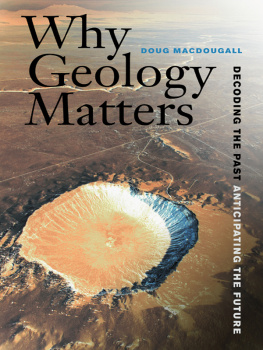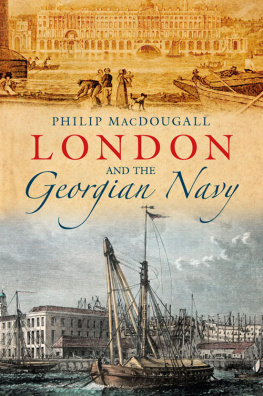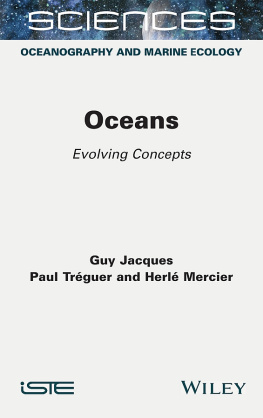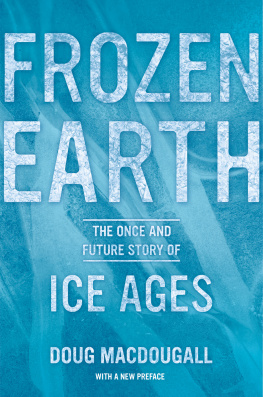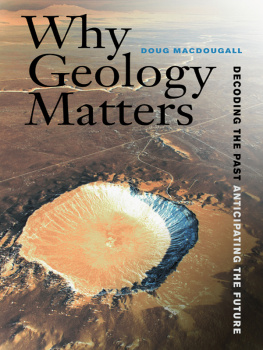ENDLESS NOVELTIES OF EXTRAORDINARY INTEREST
Also by Doug Macdougall
Nonfiction
A Short History of Planet Earth: Mountains, Mammals, Fire and Ice
Frozen Earth: The Once and Future Story of Ice Ages
Natures Clocks: How Scientists Measure the Age of Almost Everything
Why Geology Matters: Decoding the Past, Anticipating the Future
Fiction
Diamond Men
DOUG MACDOUGALL
Endless Novelties of Extraordinary Interest
The Voyage of
H.M.S. Challenger and
the Birth of
Modern Oceanography

Published with assistance from the foundation established in memory of Calvin Chapin of the Class of 1788, Yale College.
Copyright 2019 by Doug Macdougall.
All rights reserved.
This book may not be reproduced, in whole or in part, including illustrations, in any form (beyond that copying permitted by Sections 107 and 108 of the U.S. Copyright Law and except by reviewers for the public press), without written permission from the publishers.
Yale University Press books may be purchased in quantity for educational, business, or promotional use. For information, please e-mail sales.press@yale.edu (U.S. office) or sales@yaleup.co.uk (U.K. office).
Set in Janson type by Westchester
Publishing Services.
Printed in the United States of America.
Library of Congress Control Number: 2019931293
ISBN 978-0-300-23205-9 (hardcover : alk. paper)
A catalogue record for this book is available from the British Library.
This paper meets the requirements of ANSI/NISO Z39.48-1992 (Permanence of Paper).
10 9 8 7 6 5 4 3 2 1
For curiosity, science, and the pursuit of truth
Contents
PREFACE
Just over a century and a half ago, six scientists with an overwhelming curiosity about the natural world set off from Portsmouth, England, on an adventure that would occupy them for the next three and a half years. They did not depart on their own, however; they were embedded with more than 250 sailors and officers of the British Royal Navy on a ship called H.M.S Challenger. The story of their voyage is one of discovery and adventure, hardship and humor. The expedition they embarked on was, uniquely, a product of its place and time. In hindsight it is easy to take a historical enterprise like this for granted, as something that was bound to happen. But in its day it was revolutionary.
My first encounter with the Challenger expedition came about serendipitously. I was a new graduate student at the Scripps Institution of Oceanography in La Jolla, California, searching for a suitable Ph.D. research project (in those heady days we were expected to devise our own; there were few, if any, ready-made projects to take up). I was particularly interested in the sediments of the deep sea floor, and one day in the library, as I glanced at the pile of books I had pulled from the stacks, I noticed one that stood out. It was both larger and older than the others, and the title on the spine said simply, Deep-Sea Deposits. Inside I found a more formal and much longer title: Report on Deep-Sea Deposits Based on the Specimens Collected During the Voyage of H.M.S. Challenger During the Years 1872 to 1876. The authors were John Murray and the Rev. A. F. Renard, and the publication date was 1891. The volume was Published by Order of Her Majestys Government, the title page said.
In an editorial note at the beginning of the book, John Murray, the lead author, explained that he hoped the information it contained would be useful because it was the first attempt to deal systematically with Deep-Sea deposits, and the Geology of the sea bed. The volume contained hundreds of pages of detailed descriptions of sea-bottom sediments from almost every corner of the world, and the text was accompanied by exquisite drawings of things recovered from the ocean floor: minerals, sharks teeth, manganese concretions, shells, and skeletons of creatures such as foraminifera and diatoms. (Photography was relatively new and cumbersome at the time, so although some specimens were photographed, many more were depicted in detailed, precise sketches.) I was entranced.
The book I was looking at, it turned out, was just one of fifty similarly massive volumes of the Challenger Report. (You read that correctly, there really are fifty.) They comprise the official record of the groundbreaking expedition, detailing its scientific findings and bringing together descriptions of all the specimens recovered. Many scientists, not just the six who had participated in the expedition, were involved in the work that went into producing the report, and the final volume did not appear until 1895, nearly twenty years after the voyage ended. Over the years since my first encounter with these volumes I have periodically returned to them, and to other material related to the expedition. Why such interest in a voyage that took place so long ago? Aside from the science itselfwhich was certainly important, but to a large degree has been overtaken by modern researchI am fascinated by the question of why the expedition has attained such an iconic place in the annals of ocean exploration and science. Why have so many later vessels of discoverysuch as the lunar module piloted by Harrison Schmidt on the Apollo 17 mission and a space shuttlebeen named after H.M.S. Challenger? And what was it that compelled those six Challenger scientists to leave their offices, their laboratories, and the comforts of home to embark on such a long and at times difficult sea voyage?
The Challenger expedition was first and foremost about science. But it was funded by the British government through the navy, which turned over one of its vessels to this small group of scientists to sail around the world for several years making measurements and collecting samples of everything from seafloor mud to plants and animals from the islands they visited. Furthermore, the navy provided funds for their salaries as well as for the microscopes, sample jars, dredges, and other pieces of scientific equipment they would need on the voyage. Why? Part of the reason, I believe, had to do with the expeditions timing, as will be explored in this book. The Victorian era was characterized by curiosity about the natural worldamong scientists certainly, but also among the general public. Amateur naturalists abounded: birdwatchers, fossil hunters, butterfly collectors. Some of these nature enthusiasts donated their personal collections to newly established museums of natural history or even set up their own museums. An expedition to explore the ocean was bound to make discoveries and bring back an abundance of new marine creatures for display. It was almost guaranteed to be a popular venture. That perception was borne out quickly: as the voyage progressed, dispatches from Challenger appeared in newspapers and periodicals worldwide and were eagerly awaited, especially in Britain. When Challenger finally returned home from her epic journey and moored at the navy docks near the mouth of the Thames, so many people wanted to visit the now famous ship that special trains had to be laid on to take passengers from London to the dockyards.
Beyond the intrinsic interest in exploration and discovery, compelling practical considerations came into play when the expedition was first proposed. Britain depended on sea power to guard its global trading routes and protect the far-flung colonies of the British Empire, which were the source of much of the countrys wealth. New information about the vast tracts of ocean patrolled by the Royal Navy would be inherently valuable. In addition, much of the burgeoning business of laying deep sea telegraph cables was centered in Britain, and
Next page

